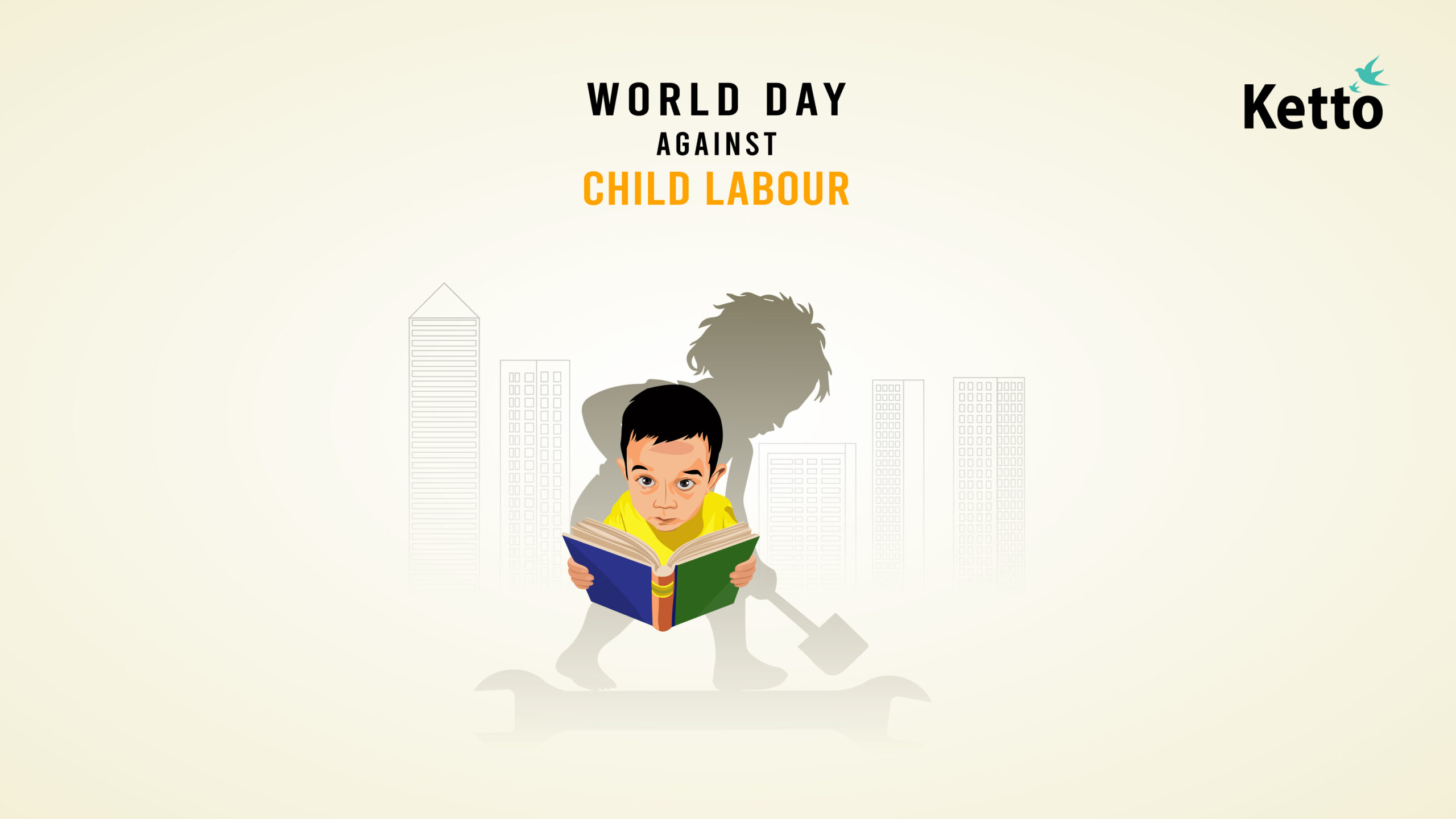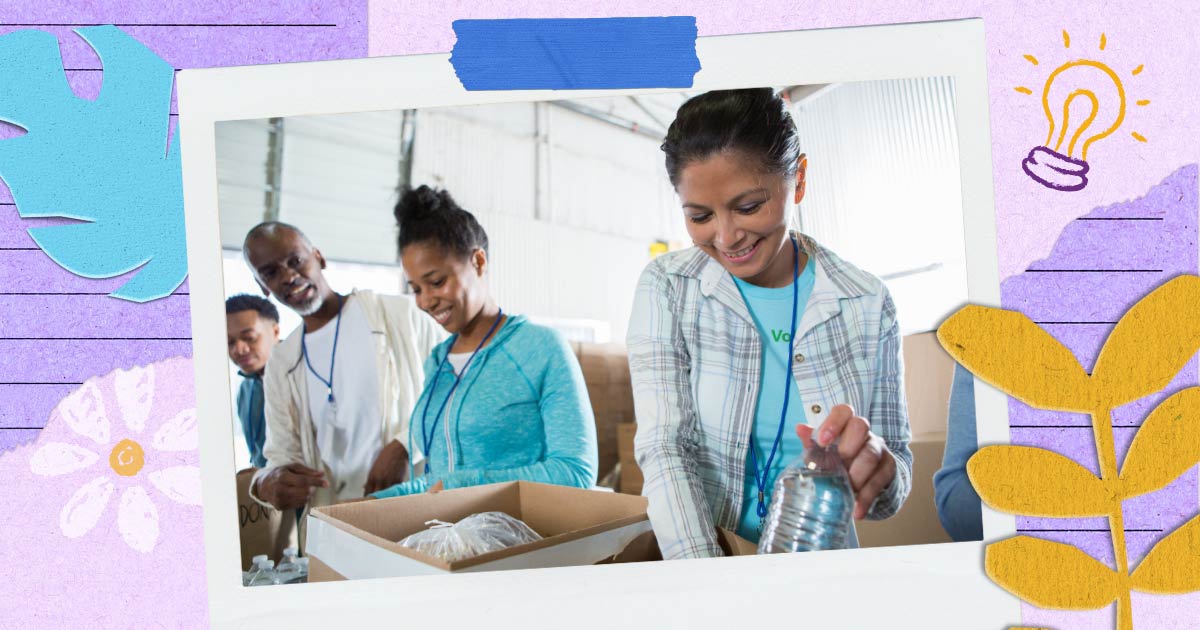The World Day Against Child Labour, observed annually on June 12th, unites us in the fight against this global issue. Millions of children, instead of having a childhood and education, are forced into labour, often risking their health and development. This day serves as a stark reminder to take action and end child labour for a brighter future.
In this article, we’ll cover topics related to child labour and its adverse effects. We will share some World Day Against Child Labour quotes with you that you can send to spread awareness amongst your loved ones. We also have a fun and interactive quiz that you can take to test your skills and also share a speech on World Day Against Child Labour that you could present in your school, college, or place of work on this day.

Understanding child labour
Child labour forces children into work that is unsafe, unhealthy or interferes with their social and emotional development. This exploitation can take many forms, putting a strain on their minds, bodies, and spirits. These types of work not only pose immediate risks to the health and safety of children but also interfere with their education and overall development.
Children may be forced into dangerous environments like mines and factories, where they face exposure to toxic materials and operate heavy machinery far beyond their capabilities. It can also involve long hours of physically demanding tasks in agriculture, domestic work, or street vending. The most horrific forms of child labour involve forcing children into criminal activities like drug trafficking or prostitution. These situations steal their innocence and expose them to unimaginable dangers.
The Global Picture of Child Labour
Child labour is a major problem that affects many children worldwide. It’s more common in some areas than others. Sub-Saharan Africa bears the highest burden of child labour globally. Desperation fueled by poverty and lack of education can push families to depend on their children’s income for survival. Asia is another region with a significant prevalence of child labour. Economic growth in many Asian countries has led to increased industrialisation and urbanisation.
However, this has also resulted in the exploitation of children in manufacturing, construction, and domestic work. Many children from marginalised communities are forced to work long hours in hazardous conditions, often for minimal pay and without access to education or healthcare. In the Pacific region, child labour is prevalent in agriculture, fishing, and informal sectors.
How the World is Implementing Strategies to Eradicate Child Labour
Globally, numerous strategies are being implemented to eradicate child labour. On this World Day Against Child Labour, let’s work on these challenges faced by the world:
Legislation and Policies: International efforts to combat child labour are bolstered by laws within countries and international conventions set by the ILO, which include the Minimum Age Convention as well as the Worst Forms of Child Labour Convention.
Education: Ensuring that every child has access to quality education is a key strategy. Programs that help free and compulsory education keep children in schools and out of the workforce.
Social Protection: Child labour involves harmful work in factories, mines, or dangerous conditions. Poverty and lack of education force families to rely on children’s income. This exploitation can even push children into illegal activities.
Globally, countries enact laws against child labour. The ILO sets international standards to end this practice through conventions. Strengthening social safety nets for families, like access to healthcare and financial assistance, can lessen the economic hardship that drives child labour.
Corporate Responsibility: The focus on ethical sourcing is rising, with companies facing greater pressure to ensure responsible practices throughout their supply chains. Many businesses are adopting policies to ensure that their products are not made using child labour.
Public Awareness Campaigns: Raising awareness through media, public campaigns, and community engagement helps to change societal attitudes towards child labour.
Addressing the challenges faced by child labourers in India
Even with progress in other areas, India faces a significant challenge with child labour. A 2017 UNICEF report estimated over 10 million child labourers between 5 and 14. This concerning reality highlights the need for strong, unified action to tackle this widespread issue.
By observing World Day Against Child Labour in India, we can highlight the significance of addressing these challenges and promote awareness about the steps needed to eradicate child labour. The Indian government has enacted several laws and implemented initiatives to combat child labour. One such crucial piece of legislation is the Child Labour (Prohibition and Regulation) Act, which aims to prohibit the engagement of children in certain occupations and processes and regulate the working conditions in others.
By observing World Day Against Child Labour, India can reinforce the importance of these laws and bring national attention to the issue. Additionally, the government has launched the National Child Labour Project (NCLP) Scheme, which focuses on the rehabilitation of child labourers by providing them with educational and vocational training opportunities. These efforts are crucial steps towards eliminating child labour and ensuring the well-being of vulnerable children.
What is World Day Against Child Labour?
World Day Against Child Labour helps raise awareness about the challenges that child labourers face and uniting efforts to eradicate child labour in all of its forms. It highlights the importance of safeguarding children from exploitation and ensuring their access to a secure and nurturing upbringing.
The primary objective of World Day Against Child Labour is to shine a spotlight on the pervasive issue of child labour and to catalyse action at local, national, and international levels. By highlighting the plight of child labourers and underscoring the necessity of protecting their rights, this annual observance seeks to galvanise stakeholders across sectors to work collaboratively towards ending child labour.
At the heart of World Day Against Child Labour lies the imperative to raise awareness. Through various campaigns, events, and educational initiatives, this day seeks to inform the public about the harsh realities faced by millions of children who are coerced into labour at a young age. By shedding light on the detrimental effects of child labour on children’s physical, mental, and emotional well-being, as well as on society as a whole, efforts are made to foster empathy and understanding.
History of World Day Against Child Labour
Child labour, prevalent in many countries, forces children into harmful work. Economic hardship and limited access to schooling are major reasons why children are forced into labour. The International Labour Organization (ILO) established World Day Against Child Labour in 2002 in order to spread awareness and promote action. Companies are increasingly held accountable for ethical sourcing practices.
The World Day Against Child Labour was launched in 2002 to tackle the issue of millions of children who are involved in dangerous work. Since its inception, it has evolved into a significant platform for advocacy, education, and action. Each year, governments, organisations, activists, and communities come together to commemorate this day and reaffirm their commitment to protecting children’s rights and promoting their well-being.
World Day Against Child Labour – Date
Observed on a grand scale every year on 12 June, World Day Against Child Labour encourages governments, organisations, and individuals worldwide to mark this day to reflect on the progress made and to acknowledge the work that still needs to be done to combat child labour effectively. This date reminds us of the ongoing battle against child labour.
It prompts governments, organisations, and individuals to assess the current state of child labour globally and to renew their commitment to its eradication. By observing this day, stakeholders can raise awareness, mobilise resources, and advocate for policies and initiatives that prioritise the welfare and rights of children.
Each year, on June 12, stakeholders take stock of the progress made in the fight against child labour. They review the impact of interventions, assess the effectiveness of policies, and identify areas that require further attention and investment. Learning from past efforts allows stakeholders to improve their strategies and target resources more efficiently. This focus on root causes can lead to a more sustainable solution to child labour.
World Day Against Child Labour is celebrated on a large scale, and on this day, involved parties come together and share their experiences and success stories in the fight against child exploitation. On 12 June, World Day Against Child Labour brings the global community together to pledge renewed efforts towards eliminating child labour.
By observing this day, the world can unite in its mission to ensure a brighter future for all children.
World Day Against Child Labour Theme 2024
The World Day Against Child Labour theme for 2024 is “Let’s act on our commitments: End Child Labour.” It highlights the importance of taking concrete actions to fulfil the promises and pledges made to end child labour globally. It emphasises the need for all stakeholders, including governments, organisations, businesses, and individuals, to come together and work towards eradicating child labour in all its forms.
World Day Against Child Labour activities to inspire others
World Day Against Child Labour activities play a crucial role in raising awareness and mobilising efforts to eliminate child labour globally. These activities often include educational workshops where experts discuss the impact of child labour and the importance of education for all children. Public marches and rallies are also organised to draw attention to the issue, give a voice to those who are often unheard, and inspire communities to take action.
Additionally, community events such as art exhibitions, film screenings, and interactive sessions provide platforms for sharing stories, spreading knowledge, and promoting solutions. By participating in World Day Against Child Labour activities, individuals and organisations can contribute to creating a safer, more just world for children everywhere.
The Role of International Organisations on World Day Against Child Labour
International organisations play an important role when it comes to fighting child labour, working tirelessly to protect children’s rights and ensure their well-being. The International Labour Organization (ILO), which is a champion of worker’s rights, plays a crucial role in combating child labour.
One of the primary functions of the ILO is to provide technical assistance to countries in developing and implementing effective strategies to combat child labour. This assistance may include capacity-building, training programs, and policy development tailored to the specific needs of each country. UNICEF is another key player in the fight against child labour, focusing specifically on protecting the rights and well-being of children worldwide. As part of its mandate, UNICEF works to ensure that every child has access to essential services, including education, healthcare, and protection from exploitation.
World Day Against Child Labour quotes to spread awareness among your loved ones:
As we commemorate World Day Against Child Labour, let us draw inspiration from these quotes and do our bit to protect the rights of every child. Share these World Day Against Child Labour quotes with your loved ones to spread awareness:
- “Children should have pens in their hands, not tools.” – Kailash Satyarthi
- “Every child deserves a childhood free from exploitation and abuse.” – Malala Yousafzai
- “The only way to end child labour is to ensure that all children have access to education and opportunities.” – ILO Director-General
World Day Against Child Labour Slogans
World Day Against Child Labour slogans raise awareness and help fight child exploitation. These slogans emphasise the importance of education and the need to protect children’s rights. By spreading these messages, we can help build a world where every child can enjoy a safe and healthy childhood. Here are some slogans:
- On World Day Against Child Labour, let’s unite with powerful slogans to raise awareness and inspire action to end child exploitation.
- Embrace the spirit of World Day Against Child Labour with impactful slogans that highlight the importance of education and a safe childhood for every child.
- This World Day Against Child Labour spread the message far and wide with slogans that call for justice, protection, and opportunities for all children.
Quiz on World Day Against Child Labour to test your knowledge
Test your knowledge of World Day Against Child Labour with our interactive quiz:
1. World Day Against Child Labour is observed on?
a) June 12
b) July 12
c) August 12
d) September 12
2. Which organisation launched World Day Against Child Labour?
a) UNICEF
b) ILO
c) WHO
d) UNESCO
3. How many children are engaged in child labour worldwide, according to the UN?
a) 152 million
b) 200 million
c) 100 million
d) 50 million
4. What is the theme for World Day Against Child Labour 2024?
a) Ending Child Labour in Supply Chains
b) Social Justice for All: Ending Child Labour
c) No to Child Labour, Yes to Education
d) Let’s act on our commitments: End Child Labour
(Answers: 1-a, 2-b, 3-a, 4-d)
Speech on World Day Against Child Labour
Here is a sample speech on World Day Against Child Labour to commemorate and spread awareness of this day in your school or college:
‘Good morning to one and all present here.
Today, as we mark World Day Against Child Labour, we raise awareness about the millions of children trapped in exploitative work globally. According to the United Nations, over 152 million children are engaged in child labour, with nearly half of them working in hazardous conditions. This exploitation robs children of their education, healthcare, and the safe childhood they deserve.
Child labour is not just a violation of children’s rights, but it is also a major hindrance to social and economic development. It perpetuates a cycle of poverty, illiteracy, and exploitation. Every child has the fundamental right to a safe haven, an education, and the freedom to dream for a brighter future.
The theme for World Day Against Child Labour in 2024 is “Let’s act on our commitments: End Child Labour.” This theme emphasises the need to take actual steps to keep the commitments and pledges made to abolish child labour worldwide. It highlights the importance of all stakeholders, including governments, NGOs, corporations, and individuals, working together to end all forms of child labour.
Ending child labour requires a united front. Governments must enforce laws protecting children, while business owners must also ensure that their supply chains are free from exploitation. Each one of us must raise our voices against child labour and support initiatives that provide education and opportunities for children.
Let us all pledge to work together to end child labour and create a world where every child can enjoy their childhood and build a better future.
Thank you.’
Conclusion
In conclusion, World Day Against Child Labour serves as a poignant reminder of the widespread issue of child labour and the urgent need for action. Awareness, advocacy, and support for child rights are our weapons in the fight to end child labour.
One way to act against child labour and support the welfare of affected children is through Ketto, a crowdfunding platform dedicated to various causes, including child welfare. Through Ketto, individuals can contribute to fundraisers that are started to raise funds for medical treatments of underprivileged children.
Moreover, through Ketto SIP, you can contribute as little as Rs 100 a month and help educate a child. Education empowers children with knowledge, skills, and the confidence to dream beyond their circumstances. It equips them to fight for their rights and find decent work opportunities, breaking the cycle of poverty and exploitation that fuels child labour. By investing in their education, you’re not just giving a child a brighter future; you’re helping dismantle the system that traps them in child labour.
As we commemorate World Day Against Child Labour, let us remember that our actions, no matter how small, can have a significant impact on the lives of vulnerable children. By standing together and raising our voices, we can create a world where every child is free from exploitation and has the opportunity to thrive. Let’s continue to work towards a future where child labour is eradicated and every child’s rights are protected and upheld.
- World Day Against Child Labour: Quotes, Theme, History & Activities – June 11, 2024
- World Food Safety Day: Quotes, Theme, Activities, Facts & More – June 6, 2024
- World Environment Day: Quotes, Theme, Activities & More – June 1, 2024
#World #Day #Child #Labour #Quotes #Theme #History #Activities










